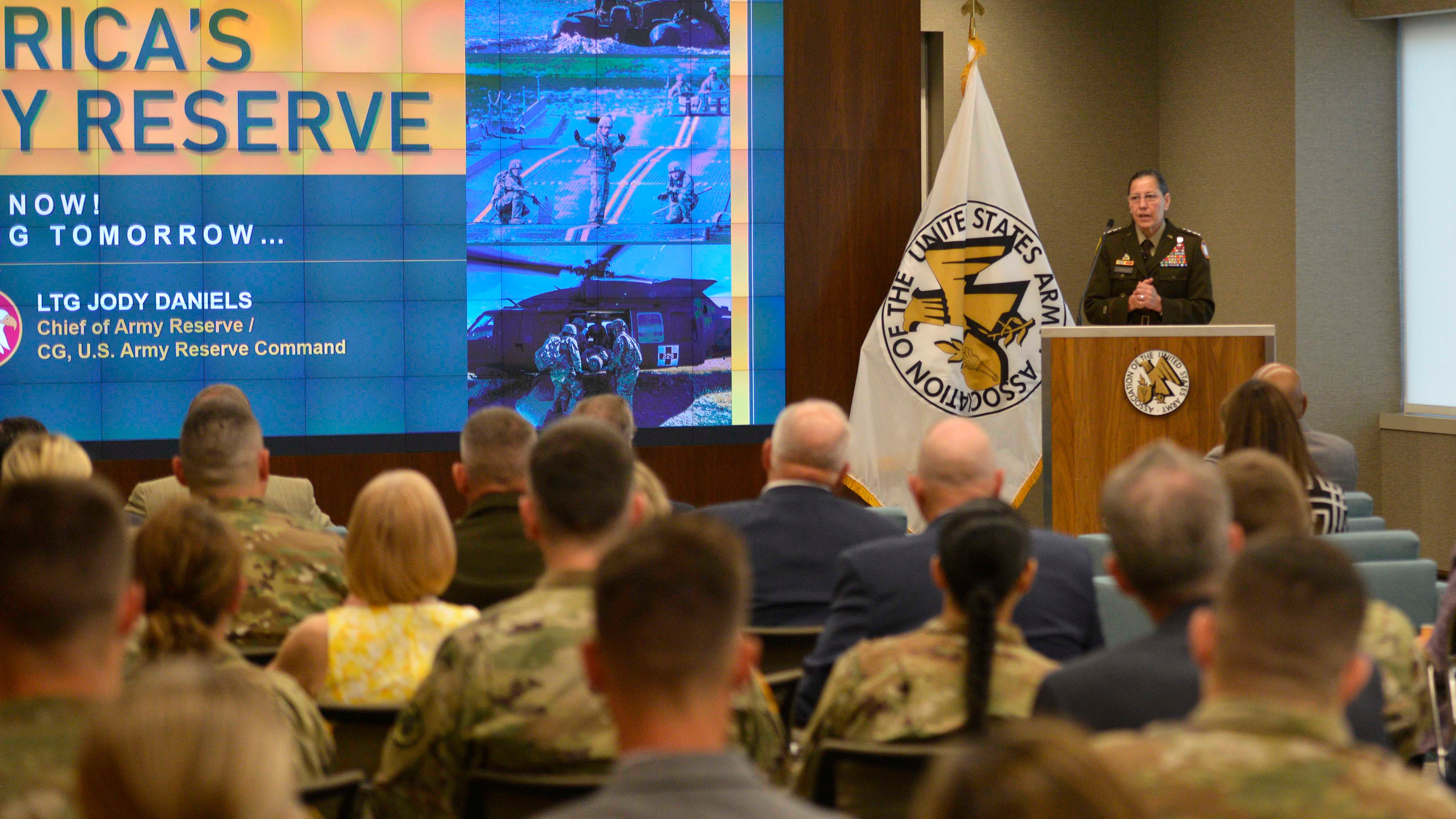Army Reserve Prepares to Restructure for Future Fight
Army Reserve Prepares to Restructure for Future Fight

As the Army looks at restructuring to meet the demands of the future fight, the Army Reserve is poised to follow suit in the coming months with its own review of existing and future capabilities, the component’s top officer said.
“The active component has gone through a ‘night court’ equivalent of all of its formations and is making adjustments to the Total Army, … deciding which units are the most important and rank ordering them, and we will do that starting this fall,” said Lt. Gen. Jody Daniels, chief of the Army Reserve and commander of the Army Reserve Command.
Working with the Army National Guard, the Reserve will assess what capabilities it can lose or gain, how its formations should be structured, and how it will “contribute to this fight,” Daniels said Aug. 3 at a breakfast hosted by the Association of the U.S. Army as part of its Coffee Series.
“We know we're headed to multidomain operations. We know there are these different types of priority units and capabilities that the Army wants to build as we look to 2030, 2040,” Daniels said. “But what does the Reserve look like?”
In reviewing the Reserve’s structure and contributions, Daniels said she wants to make sure the component is “on a sustainable strategic path” that supports the strategy laid out by Army Secretary Christine Wormuth.
Daniels suggested the Reserve, which provides most of the Army’s combat support and combat service support capabilities, may further adapt by taking on some “combat arms-ish, if not combat arms itself” capabilities.
But rather than attempting to support heavy formations such as brigade combat teams, she said, the Reserve could potentially grow capabilities that closely complement combat operations, such as reconnaissance and counter-unmanned aerial systems capabilities.
As part of taking stock of what the Reserve has, Daniels said, everything will be looked at, including skills resident in the force that can be leveraged to greater advantage, what role technology will play in networking, communications, engineering and artificial intelligence, and what theater logistics should look like in the future.
“It’s not just about transportation,” she said of theater logistics. “There’s a lot of capabilities in there that the National Defense Strategy says that we, the Army, should be looking at, and the Army Reserve seems to have a bulk of that capability.”
Daniels’ suggestions for the future of the Army Reserve, she said, were offered as “food for thought, because I really don’t know what the answers are, but we’re looking to sort of shape that future, to shape tomorrow, to look at where we can provide maximal value.”

